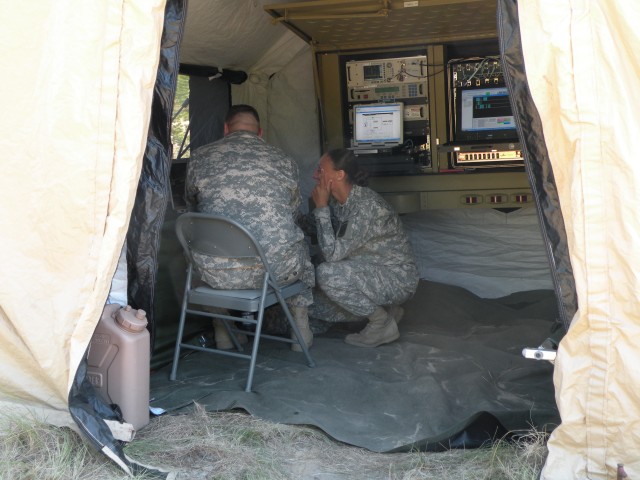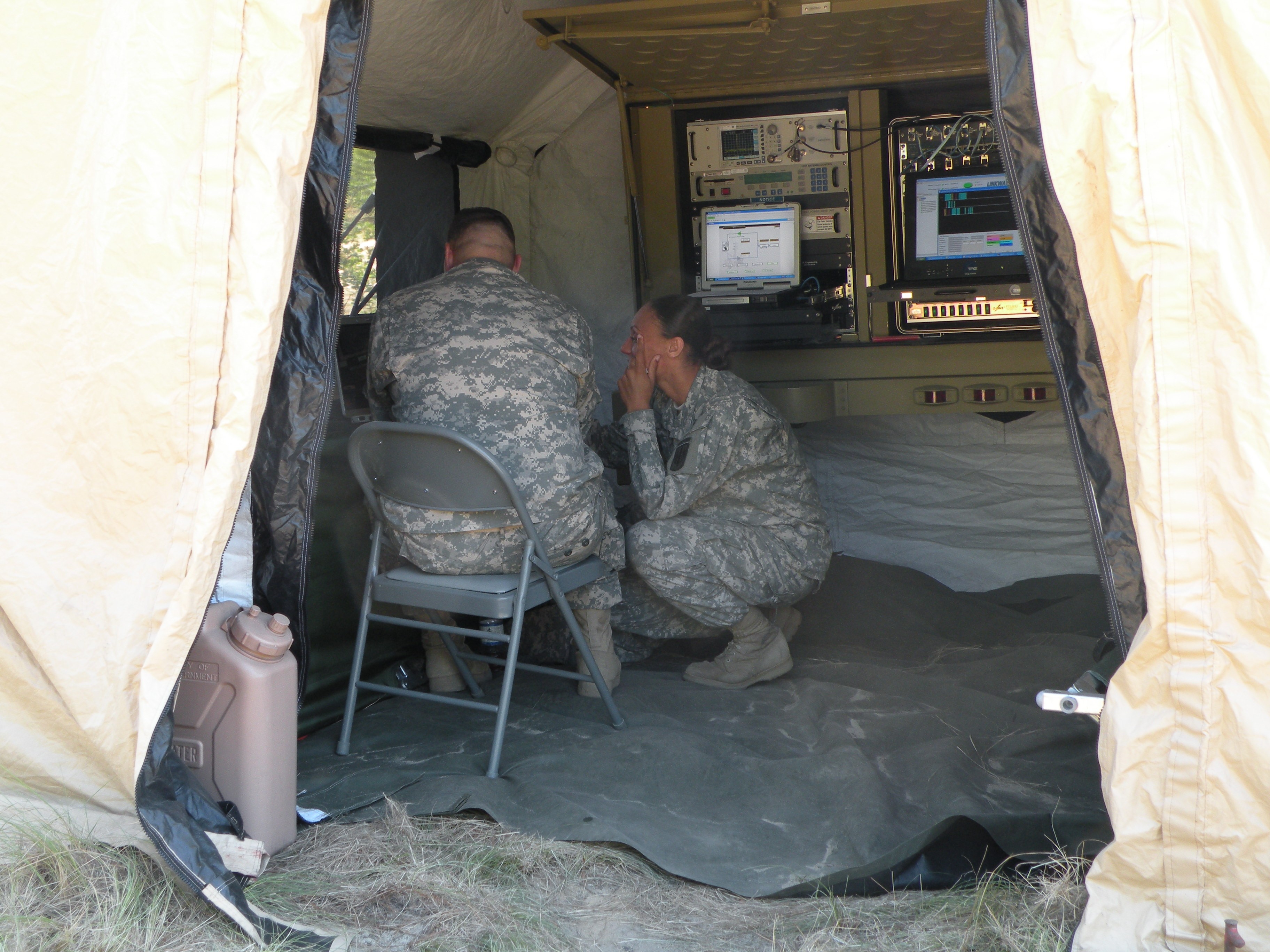
FORT BRAGG, N.C. - The notional arrival of 18th Fires Brigade of the Army's 82nd Airborne Division to the European Command (EUCOM) Area of Responsibility from its headquarters in Fort Bragg, N.C., validated the Army's Network Service Center (NSC) initiative to seamlessly transition a Warfighting unit from peace to war while ensuring continuous access to its Battle Command information and applications.
Efforts from the NSC Operational Validation (OPVAL) held in April through May at both locations will enhance the ability of all Army units to update and retain Warfighting data and prepare for combat as they travel from one location to the next.
"The whole goal of the NSC is that the communications infrastructure for the unit is absolutely transparent," said Col. Joe Puett, the OPVAL exercise director.
Units will retain a single identity (e-mail addresses and phone numbers), as they move from garrison, to training centers, to staging theaters and to combat zones. Additionally, the NSC, as an enterprise-based construct, allows Soldiers to view intelligence data and actively participate in operational battle updates from the area of responsibility they are entering as they complete other pre-deployment activities.
"They are able to talk and see and participate in battle updates with the theater that they are getting ready to join," Puett said. "Even while their equipment is on board a ship; their data and applications are actually being hosted in an Area Processing Center (APC), so that they are able to keep updating their plans and maintain their operational tempo, so that when they hit the ground; they are ready to begin fighting."
An APC is a concentration point for interconnectivity among installations, a location for common servers and enterprise services, and an entry point into the Army enterprise through an enhanced security gateway, according to the Program Executive Office for Enterprise Information Systems (PEO EIS).
Though the Army provides information technology services and support at numerous locations throughout the world and more than 440 domestic sites; in the next few years, 80 percent of the Army will be located in the United States, according to the Chief Information Officer, CIO/G6. Over the next three years, the aforementioned Global Network Enterprise Construct (GNEC) will support the Army's effort to consolidate its information technology enterprise to a constellation of NSCs located across the globe.
Resident within the GNEC will be electronic identification of Soldiers, their units, along with their information systems and requirements. The construct will allow users to rapidly tailor and task organize units and their information requirements.
This construct was established to revolutionize the manner in which units train, mobilize through theaters, and arrive in their area of responsibility ready for combat; Puett said.
Currently, as they move from each location, units must disconnect equipment from the network before they move to their next location. Then, they must plug it in again and establish new electronic identities with every move. Additionally, units do not have access to their data while their equipment is in transit.
"The situation has changed, the ground has changed, their operational tempo has been interrupted as they transition from one theatre to another," Puett said.
The goal of this construct is to ease that transition, first, to allow the unit to perform early collaboration with the unit to which they will be attached in a war fighting environment, Puett said. The second reason, is to establish a single identity as the units move from one theater to the next. Lastly, it allows them to fight upon arrival with absolutely no loss in situational awareness or the operational tempo, he said.
The NSC OPVAL is actually broken up into a number of operational validations that essentially incorporate a "crawl, walk, run idea." This particular OPVAL was the first in which its participants built an infrastructure to support the three aforementioned objectives. It was tied to the Army European Command's (EUCOM) Austere Challenge 2009, during which movement of the 18th Fires Brigade of the 82nd Airborne Division notionally deployed from its headquarters at Fort Bragg, N.C. to an area of responsibility in Europe. This simulated its movement from the continental United States to Europe.
"During the OPVAL, the unit both collaborated with a joint task force in EUCOM from their garrison environment and actually moved out to the field in Fort Bragg where they were collaborating as if they have actually deployed into that particular theatre of operations," said Puett, during the interview at Fort Bragg.
This portion of the OPVAL was carried out through series of phases that began in March 2009 and continued in April 2009 through the Austere Challenge which concluded in May.
(Timothy Rider, public affairs officer, of U.S. Army Garrison Fort Monmouth, N.J. contributed to this report.)

Social Sharing